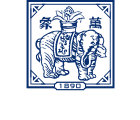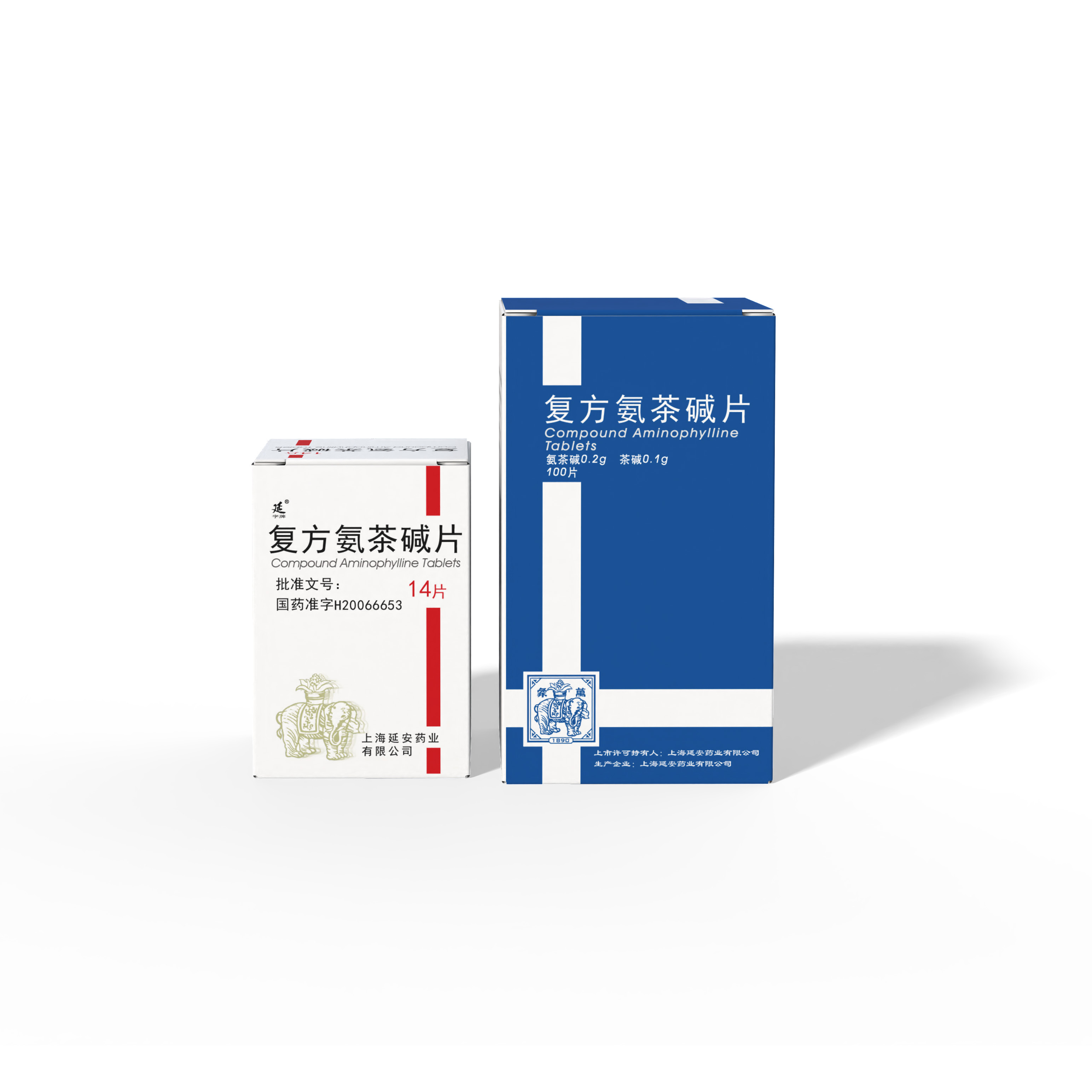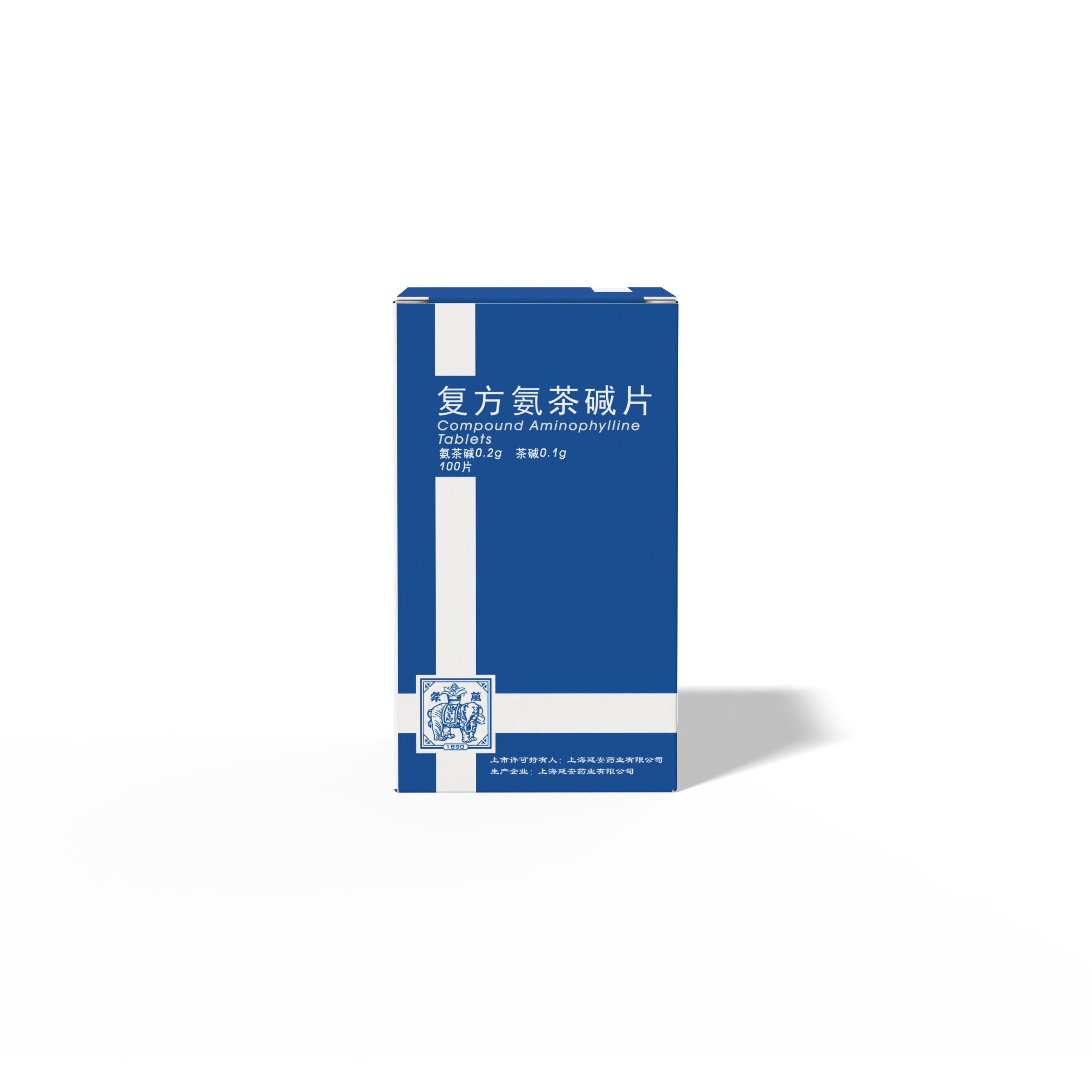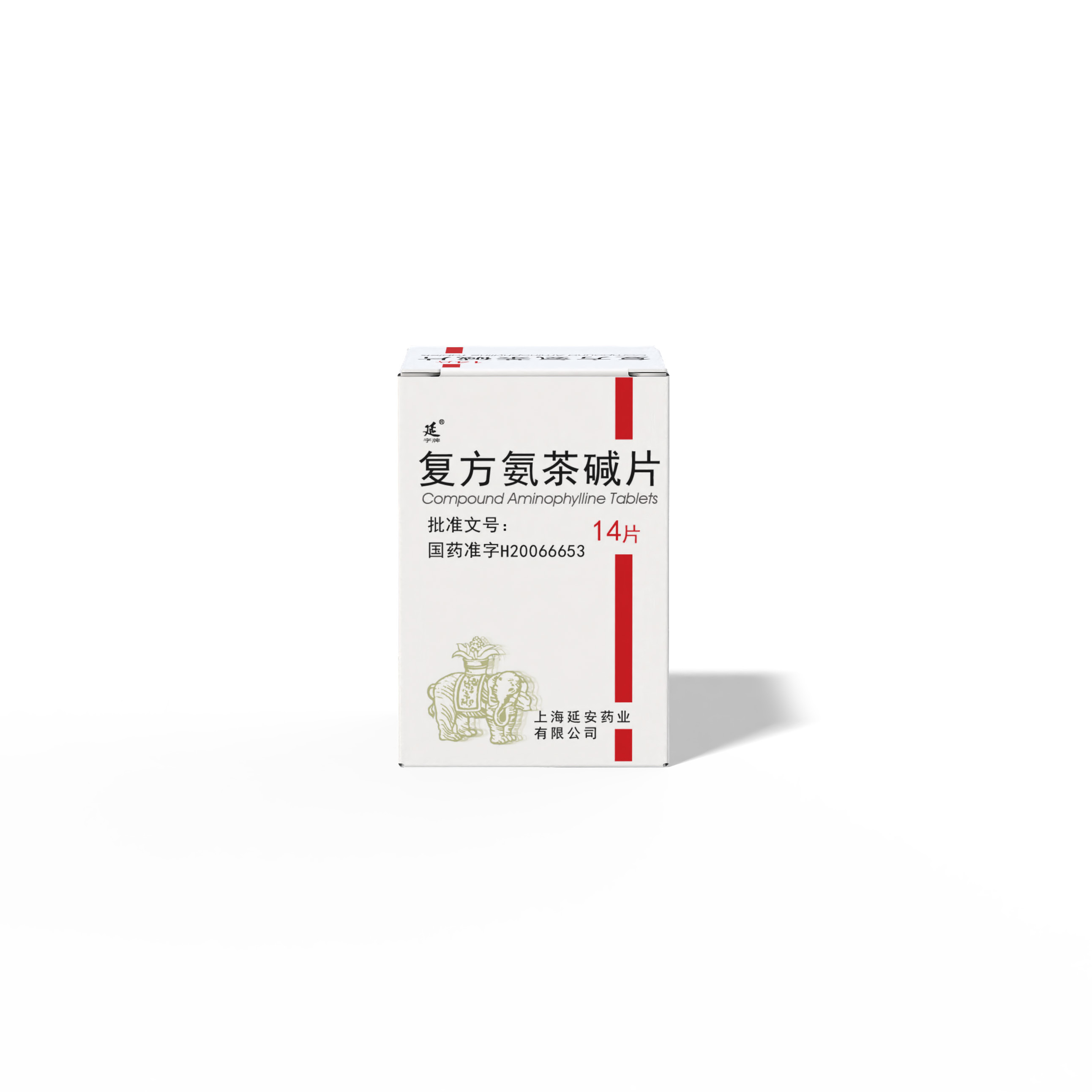Compound Aminophylline Tablets
- 产品描述
- Parameters
-
[English name] Compound Aminophylline Tablets
[Ingredients] This product is a compound preparation, including 0.2g aminophylline, 0.1g theophylline, 30mg aluminum hydroxide and chlorpheniramine maleate 2mg.
[Character] This product is used in white and brown bilayer tablets.
[Indications] for bronchial asthma.
[Specification] 0.2g. aminophylline and 0.1g. theophylline [Usage and dosage] Oral administration.
Once an l-slice, once a day.
[Adverse reactions] 1. Common adverse reactions of aminophylline in this product are: (1) Nausea, stomach discomfort, vomiting, loss of appetite, but also visible headache, irritability, easy to get excited.
(2) When this product is poisoned, its manifestations are arrhythmia, increased heart rate increase, muscle fibrillation or epilepsy.
Due to gastrointestinal irritation, bloody vomit or tarwill be visible.
2. Chlorpheniramine maleate can cause drowsiness, thick, sticky sputum, excessive can cause dysuria, urine pain, dizziness, stomachache, rash, etc.
[taboo] 1. Patients allergic to theophylline are prohibited.
2. Patients with active digestive ulcer are prohibited.
3. Patients with uncontrolled convulsive disease are prohibited.
4. People allergic to this product are prohibited.
[Notes] 1. Long-acting theophylline is not suitable for patients with emergency treatment of persistent asthma or acute bronchospasm.
2. Serum theophylline concentration should be monitored regularly to ensure maximum efficacy without the risk of excessive blood concentration. The toxicity of
theophylline often occurs at serum concentrations of 15 to 20 μ g / ml, especially at the start of treatment.
3. Patients with renal or hepatic dysfunction, patients aged over 55 years old, especially in men and patients with associated chronic lung disease, patients with heart failure resulting from any cause, and patients with persistent fever.
In patients with certain drugs and patients with reduced theophylline clearance, the maintenance time of serum theophylline concentration is often significantly prolonged after the withdrawal of combined drugs.
Adjust the medication dose or extend the medication interval as appropriate.
4. Theophylline preparations can cause arrhythmias and (or) worsen them; any changes in heart rate and (or) rhythm should be monitored and studied.
5. Theophylline should be used with caution in patients with a history of hypoxemia, hypertension or gastrointestinal ulcer.
6. Use is prohibited when drug traits change.
[Use for pregnant and lactating women] Theophylline can pass through the placental barrier, can be secreted into milk, milk discharge; small amount of chlorpheniramine maleate can also be excreted by milk, pregnant women, pregnant women and lactating women with caution.
[Pediatric medication] Neonatal plasma clearance rate can be reduced, and the serum concentration increases, which should be used with caution.
[Drugs for the elderly] The elderly should be cautious in patients over 55 years old due to reduced plasma clearance and increased potential toxicity.
[Drug interaction] 1. Diltidic tiazem and verapamil can interfere with the metabolism of theophylline in the liver and be used together with this product to increase the blood concentration and toxicity of this product.
2. Cimetidine can reduce the hepatic clearance rate of theophylline, and can increase the serum concentration and (or) toxicity of theophylline when combined.
3. Some antibacterial drugs, such as macrolide erythromycin, rothromycin, clarithromycin, fluoroquinolone enfloxacin, ciprofloxacin, ofloxacin, levofloxacin, clindamycin, lincomycin can reduce the clearance of theophylline, increase its blood concentration, especially in erythromycin and enoxacin, when theophylline with the drugs, should be appropriate.
4. Combining theophylline with lithium salt can increase the renal excretion of lithium.
Affect the effect of lithium salt.
5. The combination of theophylline with mesicillin can reduce the clearance rate of theophylline and increase the concentration of theophylline in plasma, and the dose should be adjusted.
6. The use of theophylline with caffeine or other xanthines can increase their effects and toxicity.
7. Drinking alcohol or taking central nerve inhibitors simultaneously can increase the efficacy of antihistamines.
8. Chlorpheniramine can enhance the effects of amantadine, anticholindrugs, haloperidol, phenothiazines and sympathomimetic drugs.
[Overdose] is not clear [Pharmacological toxicology] Aophylline is theophylline and ethylenediamine complex salt, its pharmacological effect mainly comes from theophylline, ethylenediamine enhances its water solubility.
Theophylline has a direct relaxation effect on the respiratory tract smooth muscle.
The mechanism of action is complex. Recent experiments believe that the bronchodilation effect of theophylline is partly due to the release of endogenous epinephrine and norepinephrine. In addition, theophylline is a purine receptor blocker and can combat the contraction effect of adenine on the respiratory tract.
Theophylline can enhance the contractility of the diaphragm muscle, especially in the diaphragm muscle contraction and weakness, so it is beneficial to improve the respiratory function.
[Pharmacokinetics] Oral aminophylline can be rapidly absorbed.
Theophylline releases aminophylline in the body, the protein binding rate is 60%, t1 / 2 newborns (within 6 months)> 24 hours, 3.7 hours ± 1.1 hours in children (above June) ± 1.1 hours, ± 2.2 hours in adults (8.7 hours without smoking and no asthma), and smokers (1~2 packs a day for 4 to 5 hours).
This product is taken orally in a fasting state, and the blood concentration peaks at 2 hours. Most of
aminophylline is excreted in the form of metabolites and 10% in its original form.
[Storage] shading, sealed preservation.
[Packaging] 100 pieces of plastic bottles.
[Validity period] tentatively 24 months
[Approval No.] Chinese drug approval word H20066653
[Drug Marketing License Holder] Shanghai Yan'an Pharmaceutical Co., LTD















